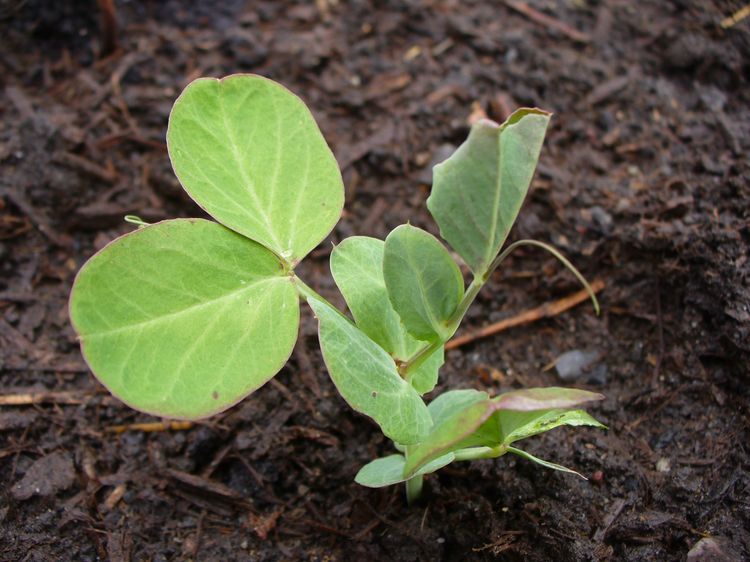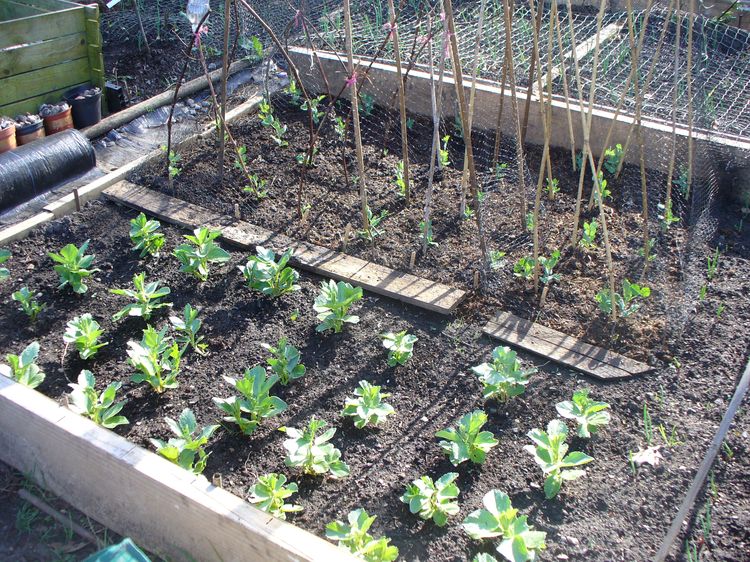It is nearly March, which means the serious business of seed-sowing needs to replace the wintry jobs of maintenance and digging. I’ve already sown my chillies and tomatoes in the propagator at home, but as it’s soon spring I am starting off seeds under cover at Plot 35a.
Peas and broad beans might be very cheap to buy from a supermarket freezer, so some gardeners don’t bother with these two crops and use their space for veg and fruit that’s more expensive to buy – asparagus, redcurrants and so on. But the taste of a young broad bean, double shelled and added to a risotto at the last moment, or a freshly picked pea squeezed from its pod and eaten while you’re still at the plot, is unmatched. Then there are the different colours of flowers and pods that, if bought, are more expensive than asparagus. The tips of broad bean plants can be flash fried with a chilli, a secondary harvest that also keeps the dreaded black fly away. And the uppermost pea shoots, which cost a fortune in supermarkets, where they are almost certainly limp from being encased in plastic, can be used in a spring salad.

In October I sowed a set of broad beans in the ground to overwinter, and again in November more broad beans and peas in root-trainers for overwintering in my ramshackle small greenhouse/cold frame. Several storms, including Storm Imogen, which was particularly cruel in the south east, put this structure under severe strain – it is currently held together with nails and heavy duty duct tape. Heavy frost in early February left the broad beans in open ground slumped over, but two days later they had sprung back up into life.
The best broad beans for overwintering are ‘Super Aquadulce’, ‘The Sutton’ and ‘Valenciana’ – these are all cold-tolerant and as long as they are sown under cover before the end of November, or in open ground before the end of October, they will grow enough to get through winter. Broad beans from an autumn sowing will crop about two or three weeks earlier (the middle of May in the south) than those sown in the spring, which is definitely worth it if you are waiting for the hungry gap to finish.

Similarly, some varieties of peas can withstand cold temperatures – including ‘Exzellenz’, ‘Feltham First’ and ‘Meteor’. Here you can see ‘Feltham First’ has grown the strongest in my cold frame this winter, but it might be because the seed is fresher.

The overwintered plants will go in the ground once the soil is warm enough, consistently around 7C, in the middle of March. To fill in any gaps, and to have some rows of different varieties that will be harvested later in May or early June, I have just sown some more broad beans in root-trainers. As the nights are still cold, they will stay undercover until at least the middle of next month. This is ‘Red Epicure’, which has seeds the colour of an Italian farmhouse terrazzo. The harvested beans will also stay this colour if they are not over-cooked (I love eating broad beans raw anyway).

Other varieties are in yet more colours: the seeds of ‘Karmazyn’ are pinky-red; ‘Dreadnought’ a camel brown; ‘Luz de Otono’, whose name means ‘Autumn Light’ in Spanish because it can carry on cropping until autumn, are the colour of hay; ‘Crimson Flowered’ seeds are, confusingly, a moss green.

I am sowing eight varieties of peas now, with a second batch of mainly sugar snap and mange tout varieties planned for next month. They are also in root-trainers and are sheltering in the cold frame until the middle of next month. I am sowing a second batch of the first earlies, ‘Feltham First’, ‘Exzellenz’, as well as second earlies ‘Jaguar’, ‘Early Onward’ and ‘Ambassador’. ‘Boogie’ is a maincrop variety while ‘Roi des Conserves’, or King of Cans – meaning it’s good for preserving – is a climbing pea that I’m growing for the first time. In this batch I am also sowing a mange tout ‘Golden Sweet’ which is also debuting on Plot 35a – and it sounds amazing: purple flowers, yellow pods and red stems.
I always sow peas and beans in root-trainers as they provide plenty of depth for these long-rooted seedlings. For broad beans, one seed per module will do. It is best sown end to end rather than flat against the earth to prevent rotting – although this only really matters when sowing outdoors. For peas, sow two seeds per module and allow both to grow – there will be enough room.
Seedlings for both broad beans and peas should grow enough to plant out within a month. Plant broad beans six inches apart. They do not need supporting until they bear pods, and only then it can be a cane roughly stuck in the ground here and there to keep them upright. Peas can be sown a little closer together because they will scramble in and out of each other. They definitely need supporting from the off – I usually erect wigwams made of pea sticks or bamboo canes and let them weave away throughout spring.

The plants need protection from birds and slugs, particularly if they are straight from the cosseted environment of their root-trainers or modules, as their green succulent unsullied leaves are like a slug buffet. I use Nemaslug, which is a preparation of microscopic slug-eating nematodes that is mixed with water and applied to the plot every six weeks. Nemaslug is harmless to humans and other animals, and using this throughout last season I was untroubled by the slimy veg-destroyers. Cover the growing seedlings with netting to keep the birds off.

Here is my pea and broad bean bed, that I nicknamed my Spring Risotto Bed, last April.

Broad beans can be devastated by black fly, so pinch out the top shoots once they are in flower like this:

Here is the ‘Crimson Flowered’ variety last May. You can see the leaves have been nibbled by what I think is a weevil – but this pest rarely affects the crop.

When I sow my other mange tout varieties next month, I will be sure to include this purple beauty, which is ‘Shiraz’, whose pods look stunning against the fresh green growth.

Broad beans are ready to harvest in the middle of May; peas late May to June – both can keep going all summer and into autumn if you sow them in succession.

If the peas make it home from the plot without me scoffing them all as soon as I pick them, I use them fresh and raw in salads – it seems such a waste to cook them when their taste is so immediately sweet. But using them in a risotto is my favourite way to cook them – similarly to broad beans, only adding them right at the end of cooking, with the parmesan cheese and some butter.

Both crops can be frozen for later use – but it tends to be the broad beans that are spare. Blanche the beans first before plunging into iced water and then freeze them, and they will hold their flavour even after six months in the freezer.
To make a fresh, citrusy spring salad, pod and shell (i.e. removing their tougher skins) a bowlful of red broad beans such as ‘Red Epicure’, roughly chop three different colours of mange tout – green, purple ‘Shiraz’ and yellow ‘Golden Sweet’, and thinly slice fresh ball-shaped radishes and mix together. Drench with two parts lemon juice to one part olive oil, add salt and pepper and leave to soak in and soften the legumes for half an hour. Thinly slice a fresh green chilli and stir into the spring veg. Add a tablespoon of natural yoghurt, mixing together and adding more if needed. Eat as an accompaniment to seasonal asparagus.

How far apart did you plant them and love you beds. How big are they?
LikeLike
The broad beans were 6 inches apart. Peas 2-3 inches apart. Beds are all random sizes but this one is about 6ft by 12ft. Thanks!
LikeLike
I did actually salivate a bit when reading this post! Have you done that hummus thing with broad beans Jane? Silly question, you grow so many, so you must have used every recipe under the sun! I wonder though if we’ll hit 7 degrees reliably outside by mid March, they’re talking about snow at Easter now! Fleecey beds?
LikeLike
Thanks Andrew! I hadn’t heard that about Easter, oh dear. I am in south London so hopefully my plot will be ok, but maybe not further north?
LikeLike
I’m sure you’re right, Jane, we probably won’t get too much in Kent, but you never know. Hope not, snow’s find over winter, but not on top of my veg seedlings thank you very much!
LikeLike
I have enjoyed reading your blog for a while, it is always so interesting… loving the photos too!
LikeLike
Thank you very much! I will take a look at yours 🙂
LikeLiked by 1 person